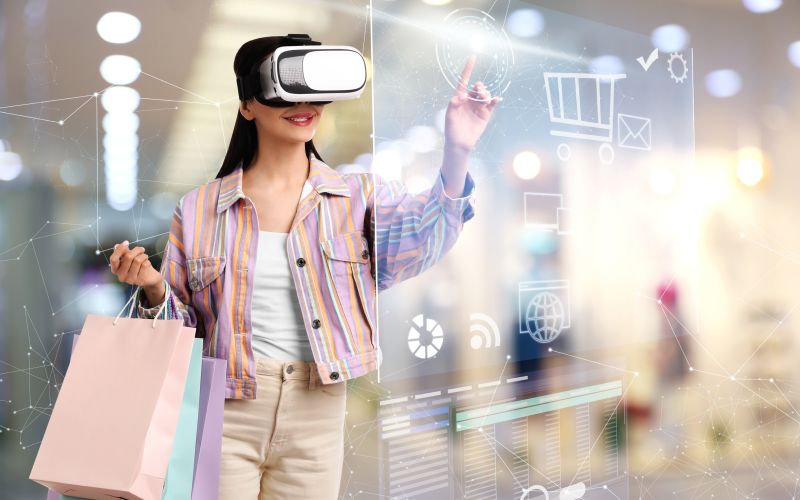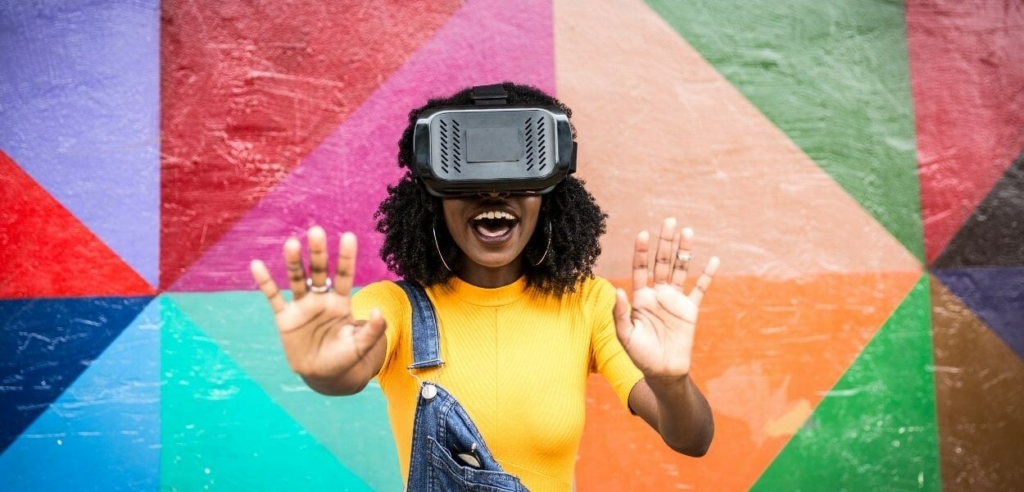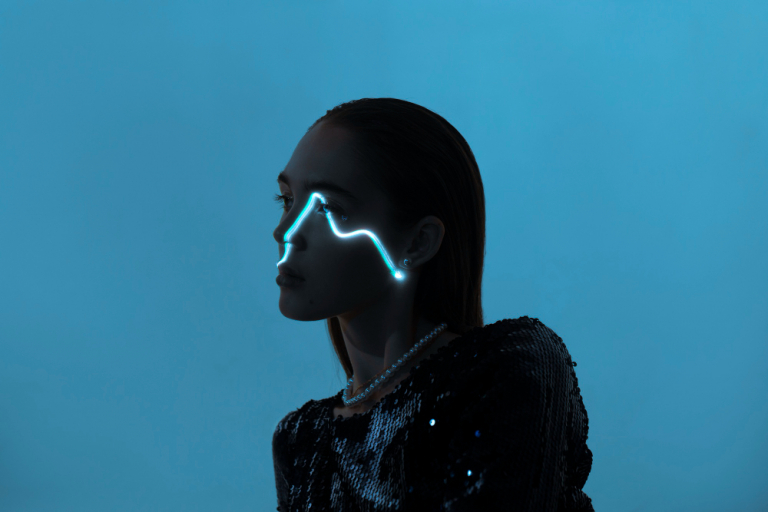Virtual Reality are revolutionary in a certain way, especially when it comes to the fashion industry. The sewing machine, for example, completely changed the norms of garment production in the 19th century. Then, in 1935, Dupont Chemicals patented nylon, which proved to be a hit when introduced to the public years later. Subsequently, in the mid-1990s, the rise of online shopping platforms revolutionized the retail experience. Yet none of these seemed to be quite as extreme as the introduction of virtual reality (VR) into fashion.
Virtual Reality in Fashion World

VR means the use of computer simulation that enables an individual to interact with a virtual, three-dimensional, visual environment. While most people might link VR to video games, the market can use this medium in many other ways. In fashion, in particular, there seem to be a plethora of applications for it. From VR fashion shows to virtual stores, experimenting with this channel seems to be very much in vogue. This is hardly surprising, especially considering that the era of COVID-19 has spurred the development of new in-home experiences.
And like any other technological innovation, the emergence of VR has unveiled many uncertainties. Yes, using such a device is very exciting, but we must wonder: could it have negative consequences? Transitioning into a digital age might come with both advantages and dangers, and it is our duty to analyze both.
Virtual Reality and Sustainability
VR as The Path to Sustainable Production
Precisely because it offers so many options, VR technology could help make the fashion industry more sustainable. More specifically, it could help reduce the environmental impact of garment production. In general, companies need to go through thousands of samples – plenty of materials – to create a few hundred garments. Evidently, such a use of resources is far from aligned with sustainable development principles.

By allowing for digital creation, VR offers a simple solution. Creating samples through virtual simulation and designing tools means that brands could significantly reduce their negative impact on the environment. That’s not to say that digital production does not pollute, but its negative effects might be way less significant. Physical production could thus be reserved for garments meant to be purchased.
Some brands have actually taken this concept a step further, creating exclusively digital pieces. For example, The Fabricant famously produced “Iridescence”, the first digital haute couture dress. The company expects non-fungible tokens (NFTs) and other types of digital garments to be the future of fashion. They could be used as “skins” in VR video game platforms, so as to dress up one’s own digital persona. One could outfit one’s avatar in Gucci’s $12 virtual sneakers or in Tommy Hilfiger’s Fall 2020 Animal Crossing collection.
Also in the realm of sustainability, virtual reality fashion shows might have less environmental impact than regular ones. People usually fly out hectically from country to country during fashion week. And, after all, airplanes are not precisely environmentally friendly. Hence, bringing fashion shows into people’s homes instead of the other way around might be a good alternative.
These ideas make virtual reality seem like a utopian fantasy; the perfect medium to make the industry more sustainable. But, as usual, the reality is far grimmer.
One Step Forward, Two Steps Back
Progress in one realm usually comes with regression in another. In this case, there are two main issues, and they both specifically relate to the idea of digital garments. Firstly, it would seem that a lot of digital pieces, such as “Iridescence”, are NFTs.
Put simply, NFTs are one-of-a-kind digital collectibles, holding a unique code, stored in a unique blockchain. Blockchain technology requires quite a lot of energy, so it generates exorbitant amounts of greenhouse gases. Thus, it would be safe to say that NFTs are far from carbon neutrality. In short, they are terrible for the environment. Henceforth, as long as the industry continues to sell digital garments as NFTs, they cannot claim to be a sustainable alternative.
Additionally, one can argue that the very concept of digital fashion is dangerous on its own. Due to its nature, a digital garment can only outfit one’s digital persona, one’s digital façade. Indeed, one presents a fictitiously perfect image of oneself to the outside world through technology. It is distinctly different from one’s authentic self. And with the digital world becoming a substantial part of our everyday reality, we have become used to performing.
This is extremely dangerous, as the more we spend pretending, the more we risk losing ourselves in our own façades. Sadly, digital garments only exacerbate the problem. They provide tools for us to further immerse ourselves in the virtual world—thus allowing us to become inherently inauthentic.
Still, we have yet to consider the other benefits virtual reality might confer to the fashion industry.
Virtual Reality and Democratizing Fashion
VR as the Great Equalizer
By providing endless possibilities to the fashion world, virtual reality could unintentionally become the great equalizer of fashion. For instance, digital fashion gives widespread access to designer brands. Furthermore, online fashion shows give the general public a peek and access to it in a way never seen before.

Hence, VR might be the perfect solution to the elitist nature of the fashion industry. This fits in with the wave of inclusion that currently ripples through the mainstream political discourse of many western countries. Everyone should have equal access to everything, and fashion should not stay behind.
Yet what could be the consequences of further exposure to the digital world?
The Consequences of Living Online
There is no denying that the rise of the digital brought with it a myriad of benefits. But what about the disadvantages of spending most of our lives looking at a screen?
The introduction of VR into fashion means that more people will spend more time on their phones and computers. If designs, e-commerce, and runway shows are accessible through VR, we will all eventually be compelled to participate. What could be the consequences?
Unsurprisingly, the use of VR technology can lead to developing myopia or nearsightedness and an atrophied eye-brain connection. More generally, however, spending a long time on a screen can lead to sleep problems, overweight, and addiction. Additionally, being constantly exposed to the apparently perfect lives of others can be extremely damaging to one’s mental health. It inevitably leads one to compare oneself to others, develop low self-esteem, and maybe even fall into depression.
With all of this in mind, it’s possible that the democratizing effect of VR might not be beneficial after all. Nevertheless, there is one final aspect to take into consideration. It might be that VR can bring great economic benefits to the fashion industry.
VR and Economic Benefits
Spending Less On Resources and Upgrading E-Commerce
As was previously mentioned, using VR to design and develop samples could bring many advantages to fashion companies. It could allow them to spend much less on physical resources and employees, hence permitting them to maximize their profits.
Moreover, VR and augmented reality could give brands the opportunity to upgrade e-commerce experiences. It could allow them to add online shopping’s eternally missing piece to the mix: the chance to try on the clothes. This could boost the brand’s profit by increasing the chance of purchases.
Nonetheless, the fact VR could increase a company’s profit doesn’t mean that it would be beneficial to its employees.
The Inevitability of Unemployment
The sad truth is that the fashion industry’s transition into VR will result in thousands of people losing their jobs. Seamstresses will be replaced by virtual artists. Brick-and-mortar store employees will be fired for web developers. Physical event planners will no longer be needed. Real models will be replaced by digital counterparts. Thousands of people will be forced into unemployment.
In some ways, however, implementing VR will inevitably create job opportunities. Certain jobs will be replaced by others, meaning that, in the end, the damage will cancel itself out. Nevertheless, it will not be as simple as single individuals replacing others.
On the contrary, an individual person could fill the vacuum left behind by multiple others. For instance, producing a traditional couture piece might require the work of quite a few seamstresses. Yet producing a digital piece might not require more than the work of a single person.
Furthermore, jobs that might not require great skill could be replaced by positions that call for highly skilled workers. For example, online store owners are not in need of employees to fold clothes or take over the cashier. Instead, they lack web developers to upgrade them.
In the end, it seems that the unprivileged—unskilled workers—would be the most affected by the VR phenomenon. And for what? For big companies to make more profit, of course.
What You Should Take Away
So, do the costs of virtual reality outweigh its benefits? It would be extremely difficult to come to an absolute conclusion. In fact, a general analysis might not even be possible. Case by case reasoning might be the way to go about it. Nonetheless, one must keep in mind that most of the previously mentioned problems involve human and environmental damage. Is that really the type of technology the fashion industry should be implementing?
Did you like this article? Check out fashion in video games.
By the way, you can also check out this panel: Fashion Is Integrating Metaverse, NFTs & the Future of the Industry






